Nicotinamide riboside
- CAS NO.:1341-23-7
- Empirical Formula: C11H15N2O5+
- Molecular Weight: 255.25
- MDL number: MFCD16621007
- EINECS: 1308068-626-2
- SAFETY DATA SHEET (SDS)
- Update Date: 2025-12-26 18:10:20
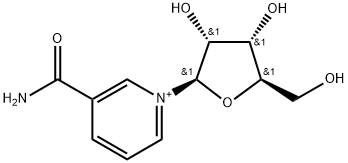
What is Nicotinamide riboside?
Description
Nicotinamide Riboside (NR) is a next-generation vitamin B3 that has been found to be naturally-occurring in milk in trace amounts. The metabolism of NR is unique from that of other more commonly known forms of vitamin B3 , nicotinamide and nicotinic acid. Specifically, NR has been shown in a pre-clinical study to be the most effective form of vitamin B3 at increasing nicotinamide adenine dinucleotide (NAD+)2 .
Nicotinic acid (also known as niacin) and nicotinamide (also known as niacinamide) were discovered in the 1930’s to be the factors that cured pellagra . Niacin is known to cause severe flushing . In 2004, nicotinamide riboside emerged as a newly discovered NAD+ precursor and does not bind to the receptor responsible for flushing.
NR has pre-clinically demonstrated that it is superior to both niacin and nicotinamide, both of which are standard forms of vitamin B3 commonly used in vitamin supplements and foods, at boosting NAD+2 . This is due to the fact that NR is not reliant upon a conversion step requiring the enzyme “NAMPT” , see Figure below. The activity level of NAMPT determines the amount of nicotinamide that is converted into NAD+ , which is why this particular step in the process is often referred to as the “rate limiting step”. As normal aging occurs, the activity of NAMPT is thought to decrease. NR can be used by the cell to make NAD+ without this enzymatic step.
NAD+ synthesis from nicotinic acid, nicotinamide, and nicotinamide riboside
Chemical properties
Nicotinamide riboside (NR) is part of the B3 vitamin family. Like other forms of vitamin B3, nicotinamide riboside gets converted into nicotinamide adenine dinucleotide (NAD+), a coenzyme essential for life. For this reason, it is often called a NAD+ precursor because it is part of the series of chemical steps that are required to create NAD+.
Different biosynthetic pathways are responsible for converting the different B3 vitamins into NAD+. The enzyme nicotinamide phosphoribosyltransferase (Nampt) catalyzes the rate-limiting step of the two-step pathway converting nicotinamide to NAD+. NR kinase enzymes can also function as a salvage pathway for NAD+, but this pathway is not essential.
The Uses of Nicotinamide riboside
Nicotinamide Riboside can be used in biological study of gene circadian reprogramming transcriptome in liver identified metabolic pathways of aging in mouse. It also increases NAD+ in the cerebral cortex and reduces cognitive deterioration in a transgenic mouse model of Alzheimer’s disease.
Definition
ChEBI: Nicotinamide riboside is a pyridine nucleoside consisting of nicotinamide with a beta-D-ribofuranosyl moiety at the 1-position. It is a metabolite found in or produced by Saccharomyces cerevisiae. It is an orally available form of vitamin B3 and precursor of nicotinamide adenine dinucleotide (NAD+) with potential use in the treatment of chemotherapy induced peripheral neuropathy (CIPN).
Benefits
Nicotinamide riboside (NR) is one of the viable natural precursors for the biosynthesis of NAD+ via two alternative pathways involving the purine nucleoside phosphorylase or the nicotinamide riboside kinase enzymes. Therapeutic benefits of nicotinamide riboside supplementation:
Constant dietary supplementation of nicotinamide riboside has been shown to increase the NAD+ levels in middle aged to elderly people.
It may support mitochondrial function.
It may enhance memory and combat cognitive decline.
It might lengthen your life.
It might promote muscle quality and strength.
It might counter the effects of a high-fat diet.
In 2016 NR received the GRAS (Generally Recognized As Safe) status from the FDA. NR also demonstrated the potential to slow aging processes in mice models.
Biological Functions
Nicotinamide adenine dinucleotide (NAD+) is a critical coenzyme that, when reduced to NADH, serves as a reducing agent to donate electrons for oxidative phosphorylation and ATP synthesis in mitochondria. NAD+ is a critical cofactor for enzymes such as sirtuins, ADP-ribosyltransferases (ARTs), and Poly [ADP- ribose] polymerases (PARPs) and is continuously consumed by these enzymes. The NAD+/NADH ratio is a critical component of the redox state of the cell. (Verdin 2015). By some counts, NAD or the related NADP participates in a quarter of all cellular reactions (Opitz Heiland 2015). There are separate compartments of NAD+ in the nucleus, mitochondria, and cytoplasm (Verdin 2015).
Nicotinamide riboside (NR) can be converted into NAD+ through an intermediate step in which it is converted into nicotinamide mononucleotide (NMN) by NR kinase (Nrk) and then to NAD+ by NMNATs. NR is naturally found in some foods but at very low quantities (e.g. low micromolar range). Historically, NR was difficult to obtain in large purified amounts, but thanks to advances in synthesis methods (Yang 2007), as of June 2013, it is sold as a dietary supplement.
Clinical Use
Nicotinamide riboside is important because it is a potent and bioavailable pre-cursor to NAD+. NAD+ is essential to life and is known to be vital to functions that ensure proper cellular and energy metabolism. The most well-known function of NAD+ is the transferring of electrons to the machinery in the cell that produces ATP, the energy currency of all cells.
NAD+ is increasingly being shown to have important functions beyond electron transfer. One of the most promising potential roles for NR as a pre-cursor to NAD+ is activation of sirtuins, enzymes associated with a wide variety of functions related to metabolism and longevity.
Side Effects
No serious adverse effects have been reported in human studies, though most of the studies so far have been short in duration and low in participant numbers. The need for larger scale and more robust human studies is critical if NR is to be properly evaluated.
To date, some people have reported mild to moderate side effects, including nausea, fatigue, headaches, diarrhea, stomach upset and indigestion. While that seems to suggest NR is likely safe, the lack of large scale long-term studies means that this cannot be confirmed.
As always, if you do decide to take a NR supplement and experience any adverse effects, you should cease taking it immediately and consult your doctor.
Safety
Nicotinamide riboside has a successful New Dietary Ingredient Notification with FDA (NDIN 882) for daily recommended intake of not more than 180 mg/d.
Nicotinamide riboside is generally recognized as safe (FDA GRAS Notice No. 635) for use in vitamin waters, protein shakes, nutrition bars, gum, chews, and powdered beverages. Maximum use level 0.0057% by weight.
Mode of action
NAD+ is a critical and often rate-limiting factor in many aspects of mitochondrial and cellular function including DNA repair by PARPs, widespread acetylation and epigenetic effects by sirtuins, efficient production of ATP, and other pathways (Stein & Imai 2012). NAD+ levels decline with age as does the ratio of NAD+/NADH, with numerous studies suggesting that blunting this decline with NAD+ precursors or genetic manipulations can blunt fundamental features of aging (see below). The levels also decline with the high-fat diet but increase with calorie restriction and fasting (Stein & Imai 2012), leading some to argue that it can function as a calorie restriction mimetic.
www.alzdiscovery.org
Properties of Nicotinamide riboside
| storage temp. | Store at -20°C |
| solubility | Water: Soluble |
| form | A low-melting semi-solid |
| InChI | InChI=1/C11H14N2O5/c12-10(17)6-2-1-3-13(4-6)11-9(16)8(15)7(5-14)18-11/h1-4,7-9,11,14-16H,5H2,(H-,12,17)/p+1/t7-,8-,9-,11-/s3 |
Safety information for Nicotinamide riboside
Computed Descriptors for Nicotinamide riboside
| InChIKey | JLEBZPBDRKPWTD-XULPMDEONA-O |
| SMILES | O[C@@H]1[C@@H]([C@@H](CO)O[C@H]1[N+]1=CC=CC(C(=O)N)=C1)O |&1:1,2,3,7,r| |
New Products
4,4-Difluoropiperidine hydrochloride tert-butyl 9-methoxy-3-azaspiro[5.5]undecane-3-carboxylate Indole Methyl Resin N-Isopropylurea N,N-Dicyclohexylcarbodiimide(DCC) MELDRUMS ACID 5-METHYLISOXAZOLE-4-CARBOXYLIC ACID Magnessium Bis glycinate Zinc ascorbate 1-bromo-2-butyne 2-acetamidophenol 9(10H)-anthracenone Erythrosin B, 4-Piperidinopiperidine 2-((4-morpholinophenylamino) (methylthio) methylene) malononitrile 2,4-dihydroxybenzaldehyde 3-(4-morpholinophenylamino)-5-amino-1H-pyrazole-4-carbonitrile Methyl 2-methylquinoline-6-carboxylate 2,6-dichloro-4-nitropyridine 4-Bromo-2-chlorobenzonitrile 2-(benzylamino)acetic acid hydrochloride 4-(tert-Butoxycarbonylamino)but- 2-ynoic acid 3,4-dihydro-2H-benzo[b][1,4]dioxepine 1-Phenyl-1-cycloprppanecarboxylicacidRelated products of tetrahydrofuran
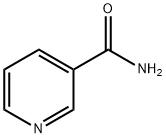


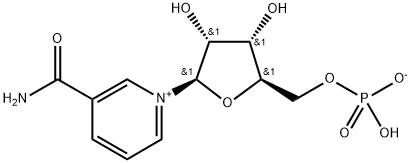
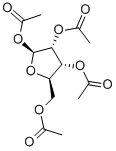
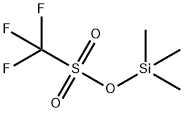
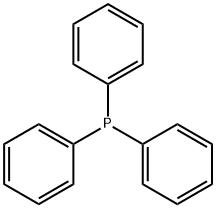

You may like
-
 1341-23-7 Nicotinamide riboside (NR) 98%View Details
1341-23-7 Nicotinamide riboside (NR) 98%View Details
1341-23-7 -
 3-(4-amino-1-oxoisoindolin-2-yl)-1-methylpiperidine-2,6-dione 98%View Details
3-(4-amino-1-oxoisoindolin-2-yl)-1-methylpiperidine-2,6-dione 98%View Details -
 614-19-7 98%View Details
614-19-7 98%View Details
614-19-7 -
 3112-85-4 Methyl phenyl sulfone 98%View Details
3112-85-4 Methyl phenyl sulfone 98%View Details
3112-85-4 -
 20677-73-0 (2,2-diethoxyethyl)methylamine 98%View Details
20677-73-0 (2,2-diethoxyethyl)methylamine 98%View Details
20677-73-0 -
 3-(4-(hydroxyamino)-1-oxoisoindolin-2-yl)piperidine-2,6-dione 98%View Details
3-(4-(hydroxyamino)-1-oxoisoindolin-2-yl)piperidine-2,6-dione 98%View Details -
 57381-49-4 2-bromo-4-chlorobenzonitrile 98%View Details
57381-49-4 2-bromo-4-chlorobenzonitrile 98%View Details
57381-49-4 -
 4,6-dichloropyrimidine-5-carbaldehyde 98%View Details
4,6-dichloropyrimidine-5-carbaldehyde 98%View Details
5305-40-8
